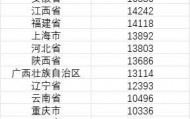Fortran语言软件开发详解
Fortran(Formula Translation)是一种面向数值计算和科学计算的编程语言,自1957年首次发布以来,一直在科学和工程领域中占据重要地位。本文将通过大量的代码示例,详细介绍Fortran的开发方法和应用场景。
Fortran程序结构
一个简单的Fortran程序包含以下几个部分:程序头、变量声明、主体和结束语句。以下是一个典型的Fortran程序结构:
fortran
复制代码
program HelloWorld
implicit none
print *, 'Hello, World!'
end program HelloWorld
在这个示例中,program定义了程序的开始,implicit none表示需要显式声明所有变量,print用于输出信息,end program表示程序的结束。
变量和数据类型
Fortran支持多种数据类型,包括整数、实数、复数、字符和逻辑类型。以下是一些变量声明的示例:
fortran
复制代码
ngxtj.com/s6NaTa/
program VariableExample
implicit none
integer :: i
real :: x
complex :: z
character(len=10) :: name
logical :: flag
i = 10
展开全文
x = 3.14
z = (1.0, 2.0)
name = 'Fortran'
flag = .true.
print *, 'Integer:', i
print *, 'Real:', x
print *, 'Complex:', z
print *, 'Character:', name
print *, 'Logical:', flag
end program VariableExample
数组和矩阵运算
Fortran的数组处理能力非常强大,支持多维数组和矩阵运算。以下是一些数组操作的示例:
fortran
复制代码
befvy.com/0cz5ft/
program ArrayExample
implicit none
integer, dimension(5) :: a
real, dimension(2, 3) :: b
integer :: i
! 初始化数组a
a = (/ 1, 2, 3, 4, 5 /)
print *, 'Array a:', a
! 初始化数组b
b = reshape([1.0, 2.0, 3.0, 4.0, 5.0, 6.0], shape(b))
print *, 'Array b:'
do i = 1, 2
print *, b(i, :)
end do
! 数组运算
b = b * 2.0
print *, 'Array b after multiplication:'
do i = 1, 2
print *, b(i, :)
end do
end program ArrayExample
子程序和函数
Fortran支持子程序和函数,使代码更具模块化和可重用性。以下是子程序和函数的示例:
fortran
复制代码
program SubroutineFunctionExample
implicit none
real :: result
call greet('Fortran')
result = square(5.0)
print *, 'Square of 5:', result
contains
subroutine greet(name)
character(len=*), intent(in) :: name
print *, 'Hello,', name
end subroutine greet
function square(x)
real, intent(in) :: x
real :: square
square = x * x
end function square
end program SubroutineFunctionExample
文件操作
Fortran提供了强大的文件读写功能,以下是一个读取和写入文件的示例:
fortran
复制代码
program FileIOExample
implicit none
integer :: i, ierr
real, dimension(5) :: data
! 打开文件进行写操作
open(unit=10, file='data.txt', status='replace', iostat=ierr)
if (ierr /= 0) then
print *, 'Error opening file for writing'
stop
endif
! 写入数据
do i = 1, 5
write(10, *) i, i * 2.0
end do
close(10)
! 打开文件进行读操作
open(unit=10, file='data.txt', status='old', iostat=ierr)
if (ierr /= 0) then
print *, 'Error opening file for reading'
stop
endif
! 读取数据
do i = 1, 5
read(10, *) data(i)
end do
close(10)
! 输出读取的数据
print *, 'Data read from file:'
print *, data
end program FileIOExample
高级特性:模块和并行计算
模块
Fortran的模块(module)提供了一种组织代码的方式,使得代码更加模块化和可重用。以下是一个使用模块的示例:
fortran
复制代码
module MathModule
implicit none
contains
function add(x, y)
real, intent(in) :: x, y
real :: add
add = x + y
end function add
function multiply(x, y)
real, intent(in) :: x, y
real :: multiply
multiply = x * y
end function multiply
end module MathModule
program ModuleExample
use MathModule
implicit none
real :: a, b, sum, product
a = 5.0
b = 3.0
sum = add(a, b)
product = multiply(a, b)
print *, 'Sum:', sum
print *, 'Product:', product
end program ModuleExample
并行计算
Fortran支持并行计算,可以使用OpenMP和MPI进行多线程和分布式计算。以下是一个简单的OpenMP并行计算示例:
fortran
复制代码
program ParallelExample
use omp_lib
implicit none
integer :: i, n, thread_id
real, dimension(100) :: array
n = 100
array = 1.0
!$omp parallel do private(i, thread_id)
do i = 1, n
thread_id = omp_get_thread_num()
array(i) = array(i) + thread_id
end do
!$omp end parallel do
print *, 'Array after parallel computation:', array
end program ParallelExample
矩阵操作
Fortran擅长处理矩阵和向量运算,以下示例展示如何使用Fortran进行矩阵乘法:
fortran
复制代码
program MatrixMultiplication
implicit none
integer, parameter :: n = 3
real :: a(n, n), b(n, n), c(n, n)
integer :: i, j, k
! 初始化矩阵a和b
a = reshape([1.0, 2.0, 3.0, &
4.0, 5.0, 6.0, &
7.0, 8.0, 9.0], shape(a))
b = reshape([9.0, 8.0, 7.0, &
6.0, 5.0, 4.0, &
3.0, 2.0, 1.0], shape(b))
! 进行矩阵乘法
do i = 1, n
do j = 1, n
c(i, j) = 0.0
do k = 1, n
c(i, j) = c(i, j) + a(i, k) * b(k, j)
end do
end do
end do
! 输出结果矩阵c
print *, 'Matrix C:'
do i = 1, n
print *, c(i, :)
end do
end program MatrixMultiplication
数值方法:求解方程
Fortran在数值计算中非常强大,以下示例展示如何使用Fortran求解一元线性方程组:
fortran
复制代码
program LinearEquationSolver
implicit none
real, dimension(3, 3) :: a
real, dimension(3) :: b, x
integer :: i, j, n
real :: ratio
n = 3
! 初始化系数矩阵a和常数项向量b
a = reshape([2.0, -1.0, 3.0, &
1.0, 3.0, 2.0, &
1.0, -1.0, 1.0], shape(a))
b = [9.0, 13.0, 1.0]
! 前向消元
do i = 1, n-1
do j = i+1, n
ratio = a(j, i) / a(i, i)
a(j, i:n) = a(j, i:n) - ratio * a(i, i:n)
b(j) = b(j) - ratio * b(i)
end do
end do
! 回代求解
x(n) = b(n) / a(n, n)
do i = n-1, 1, -1
x(i) = (b(i) - sum









评论